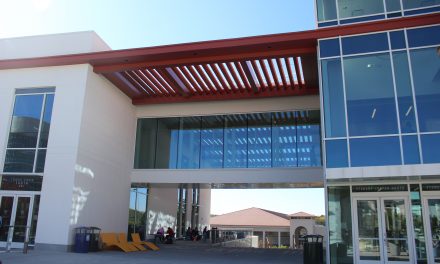Researchers from Emory’s Rollins School of Public Health (RSPH) will soon take their research to the sky, partnering with the National Aeronautics and Space Administration (NASA) in a new satellite mission to study air pollution.
NASA chose RSPH as a joint recipient of its $100 million award to study the effects of air pollution on the population through a satellite mission, according to Yang Liu, associate professor in the Department of Environmental Health. He noted the project’s significance as the first to merge the public health community with a NASA space mission.
“We’re the scientific guinea pig … the pioneer to be fully intertwined in the NASA mission design,” Liu said.
The RSPH research group, led by Liu, co-created the project idea with NASA’s Jet Propulsion Laboratory (JPL). The mission will use a Multi-Angle Imager for Aerosols (MAIA) device to record airborne particulate matter, which will collect data on the effects of pollution on public health from at least 10 locations with major metropolitan areas, according to David Diner, MAIA principal investigator for JPL.
Emory will analyze the data to make predictions about public health issues such as birth outcomes and cardiovascular disease, Liu said. The RSPH team will also serve as the public health liaison between JPL and other institutions in the complete research group. Recruited by Liu, the complete group has teams at University of California, Los Angeles, Harvard University (Mass.), University of British Columbia (Canada) and University of Dalhousie (Nova Scotia), Liu said. Those teams will use the data collected by JPL to examine their own hypotheses, Liu said.
Once constructed by JPL, the MAIA device will be mounted on a compatible Earth-orbiting satellite, Liu said. Matching the device to a satellite could take up to two years, said Howard Chang, assistant professor of biostatistics and bioinformatics and statistician for the RSPH team.
“Even though it’s a small mission, it’s actually the first ever [in which] we … get to work with NASA engineers to build public health into the DNA of this instrument,” Liu said.
Because the device will orbit via satellite, the device will provide air pollution data that has a holistic view than the more commonly used ground monitors, Chang said. Once JPL begins collecting data about five years from now, each research group will make predictions about the effects of airborne pollution for its assigned region, Chang said.
Emory is responsible for data analysis throughout the southeast region, which spans Atlanta, Birmingham, Houston and Dallas, according to Liu.
This “state of the art” approach to collecting pollution data, if successful, may result in a more advanced version to collect data that builds upon this MAIA mission and addresses climate change, Chang added.
The RSPH team initially pitched its proposal for the project to NASA’s first Earth Venture Instrument (EVI-1) program in 2012, but the proposal was not selected, Liu said.
However, NASA encouraged the team to resubmit its idea. After reorganizing and refining the proposal, the team resubmitted it in 2015, according to Liu.
NASA selected the team’s EVI-3 proposal as one of the top two proposals from a total of 14 in 2016, Liu said.
“It’s very difficult to cross to a completely different scientific community … and convince them that this [mission] is not only worthwhile but … also feasible,’ ” Liu said. “Hopefully, Emory will make a mark in NASA history.”





